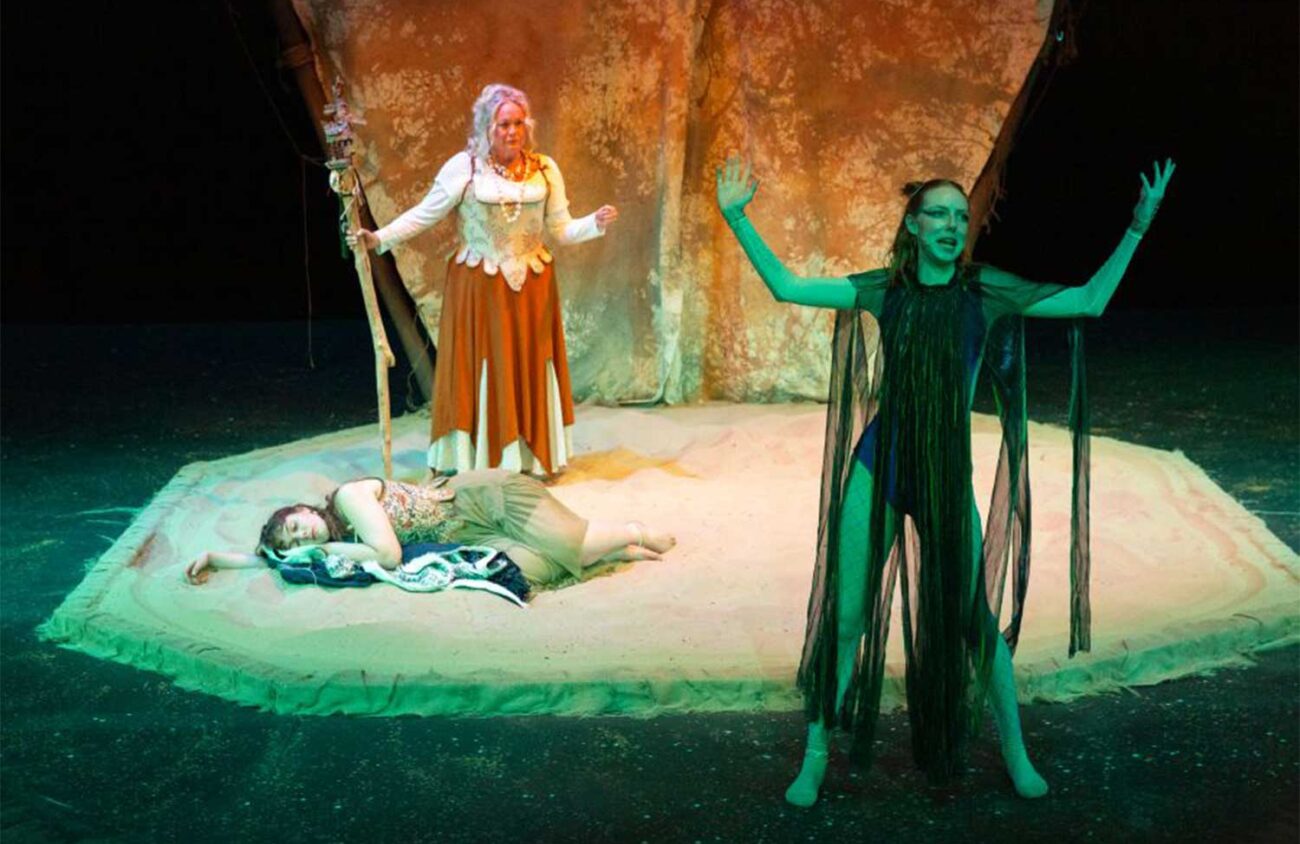Tony Rust must be a magician. What else could explain the eerie and wonderful magic that fills the stage in a new production he directed and designed of Shakespeare’s The Tempest that opened Friday, August 8, at Cottage Theatre?
The Tempest is a challenging oddball amid the Bard’s canon of 39 plays. Neither tragedy nor comedy, it has led scholars to devise a completely separate category, “romance,” which it inhabits along with three other difficult-to-pigeonhole shows (Pericles, Prince of Tyre; Cymbeline; and The Winter’s Tale). It’s also thought to be the last play Shakespeare wrote on his own, opening just five years before his death in 1616.
All four “romantic” plays are about magic. In The Tempest, Prospero, an elderly magician and rightful head of a dukedom, has been marooned for 12 years on a desert island along with his daughter, Miranda, when a storm — whipped up by Prospero’s magic — drives a ship to wreck on the shore. It’s carrying Prospero’s brother Antonio, who had been responsible for stranding them on the island through a political intrigue to deny Prospero his dukedom.
Rust’s production takes a number of engaging approaches to the traditional story.
First, and most obvious, is casting Prospero as a woman. Tracy Brous, in her 28th appearance on stage at Cottage Theatre, gives the role a confident, slightly understated character, one in which she faces not only the sudden appearance of the evil Antonio and his retinue but also the implied sexism that would surround a woman in charge. The gender change subtly alters Prospero’s relationship with Miranda, her daughter, who has come of age without ever seeing more than one man in her life. Miranda is played nimbly by Serene Zamora, a Cottage Theatre veteran now enjoying her first Shakespeare role.
Perhaps the most unusual addition to the production is the use of supertitles; the text of the actors’ dialogue is projected above the players, helping us mere mortals in the audience keep up with the archaic and sometimes confusing 400-year-old Elizabethan language. While supertitles are common in opera, even when performed in English, I’ve never seen them used in a performance of Shakespeare. It was great to be able to catch every single word, but it also meant the audience was tipped to every single stumble the actors made in delivering their lines, and there were more than a few. And a couple times an actor suddenly looked up to find that next line.
Rust is one of the few directors out there who designs his own shows, and he’s good at it. The desert island in Tempest consists of a large pile of sand — yes, real sand — on which the actors perform. A fabric curtain serves as the doomed ship’s sail in the opening violent storm, and in calmer scenes as a simple backdrop.
The cast of Tempest is large for a community theater, with 13 named roles all played by different actors. Everyone’s pretty good, but a couple of supporting players deserve a shoutout.
Martin Fogarty, in his debut at Cottage Theatre, is perfectly creepy as the monstrous, half-human slave Caliban, one of Shakespeare’s great and unforgettable characters.
And as a lithe complement to Caliban’s beast, Darcy Rust, Tony Rust’s daughter, brings sparkling life to Ariel, a fairy-like spirit of uncertain gender who is pledged to help Prospero; Ariel was saved by the magician from imprisonment in a tree by Caliban’s mother, Sycorax, a vicious witch on the island.
Under Rust’s direction, the action moves smoothly and quickly throughout the show’s two and a quarter hour run time (there is one intermission), and I found myself wanting even more when the core romance of this romance play was finally resolved.
